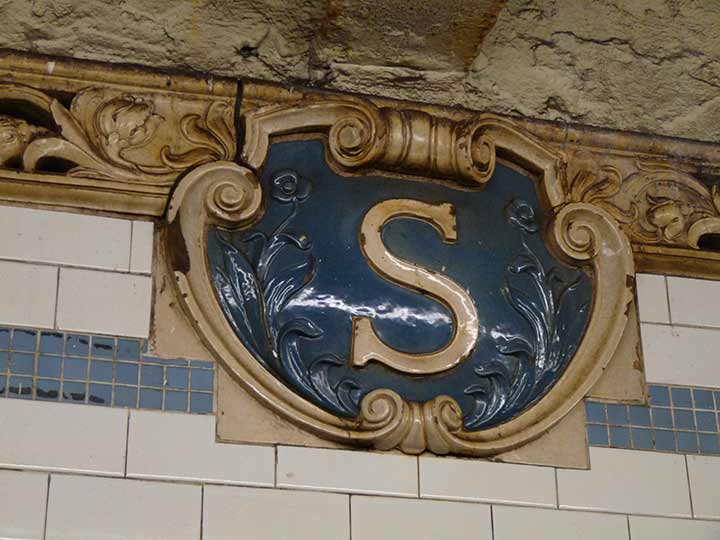
I had a rare foray on the #6 line running south on Lafayette Street recently and got out at Spring Street to see how one of my favorite stations is doing. I periodically check on the #6 trains south of Grand Central and the #1 train north of Times Square because these are the subway lines that formed the original IRT, which opened for business in October 1904 which makes them a good 117 years old at this writing. Each station was designed by architects Heins and LaFarge and reflect the Beaux Arts trend at the time.
The Spring, Canal and shuttered Worth Street Stations all had cartouches like this at the station rooflines, along with the full name spelled out in mosaic tiling on the walls. Though the passably grimy frames sort of belie the artwork’s age, the shield itself shines as it it had been installed last week. All are made with terra cotta from area factories. Original cartouches and mosaic panels featured poppies or tulips, and it’s the poppy that is represented here.
As always, “comment…as you see fit.” I earn a small payment when you click on any ad on the site.
6/23/2022


3 comments
In the early 1960s, Spring Street, as well as the other local stations between Canal Street and 33rd Street, inclusive, had their platforms lengthened to ten cars. The newer platform segments have simple tiles with a green band showing the station name. It’s easy to see the original versus the newer platforms. I always refer to the newer styles as “locker room tiles.”
I think you mean the 6 line south of Grand Central.
You mention Spring, Canal and Worth St stations. What about Bleecker St? While it may be true that the cartouches are exact copies of the 1904 ones made during the uptown platform extention southward, there is no reason to omit it
Bleecker St station is on the NYC Landmarks Preservation Commission’s list of landmarked subway stations.
Bleecker has different style cartouches than the other three and is arguably the best of the bunch.